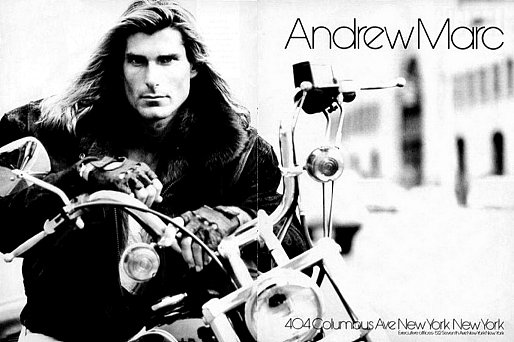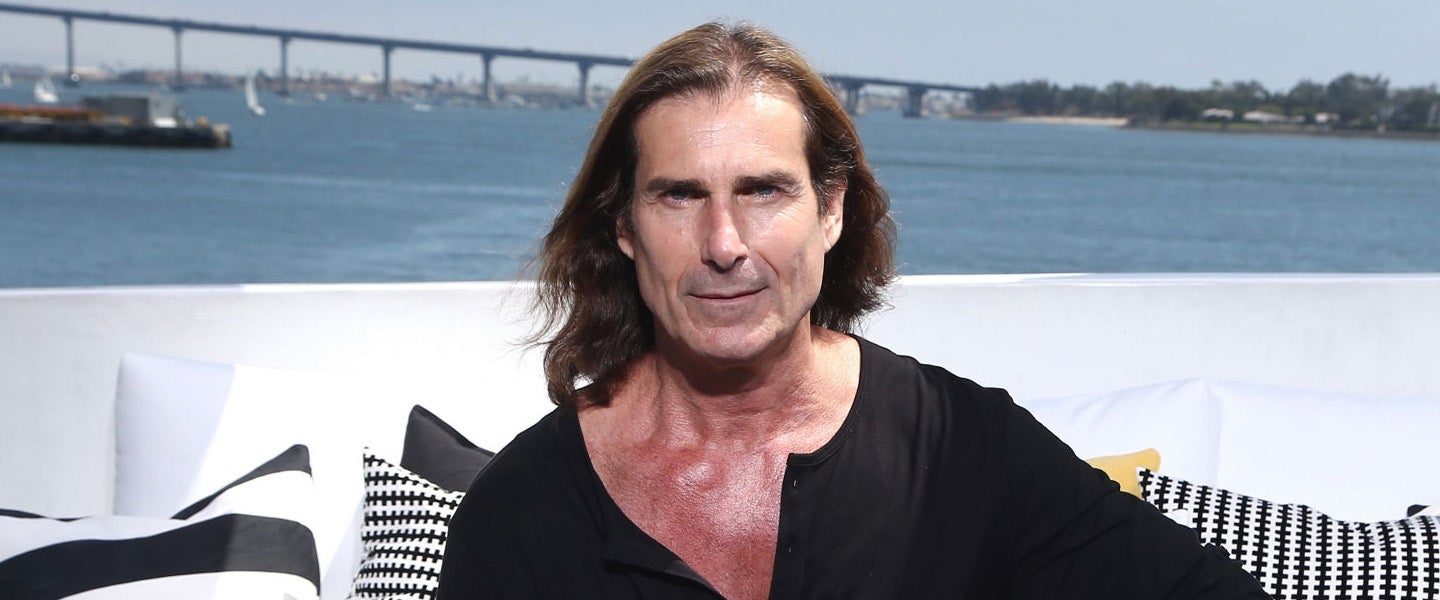Cindy Crawford.
Naomi Campbell.
Claudia Schiffer.
Tyra Banks.
Gisele Bündchen.
Bella Hadid.
The list goes on and on: Even the most fashion illiterate person can name at least a half dozen or so female supermodels. But when it comes to dudes, there’s still just one guy that everyone can identify.
Of course, I’m talking about Fabio, the golden-haired, margarine-peddling man-god who still stands alone as the only male model household name. But why is this the case?
“It’s his personality,” says Donnamaie White, a scientist and engineer who runs Fabio’s fan club. White recalls when she “bought” Fabio at a bachelor auction back in 1999 how humble and gracious he was, and she’s seen it on display many times since at fan events. His humility about his success can also be found in quotes like this, from a 2015 Guardian interview:
“I’d be the biggest hypocrite if I said I really worked very hard for my career, because it was given to me on a silver platter. I can’t take any credit.” When I pose the question to Fabio himself as to why he’s still the only male model household name, he characteristically demurs, saying “you’ll have to ask the people, I don’t know.”
Talking to Fabio on the phone myself, I can see the “gentleman” that White talks about, the friendly, almost shy nature that endeared him to the public over countless commercials for I Can’t Believe It’s Not Butter. When pressed, Fabio admits that he does enjoy the benefit of being the first male model to really break out in America, and simply the status of being first is significant. Offering a comparison, he says, “Just look at James Bond — after Sean Connery, there have been great Bonds, but they were never the first one. Only Sean Connery was first.”
On a basic level, this seems right: Fabio’s friendly personality — in addition to his looks, obviously — is a big part of the reason America grew to love him. Even me, a guy who hated that lousy fake butter ever since my aunt used to spray it on my bagels as a kid, can’t help but like Fabio and have nothing but fond nostalgia for those bizarre, self-mocking commercials.
But although it makes sense that Fabio’s status as the first breakout male model made him special in the eyes of Americans, why is he still the only one we know? After all, I can name most of the Bonds who followed Connery, yet I can’t name one other male model but Fabio (I do know Zoolander, though he, naturally, is fictional).
Part of the reason might be a lack of interest in male models in general. In a 2013 ABC News piece, the question was asked why the top male models make only one-tenth of what the top female models make. Larry D. Woodard, president and CEO of Graham Stanley Advertising answered, “In fashion, women are really involved in a way that men aren’t. Women even care about couture fashion even if they can’t buy it, but they want to look at it and understand it.” He went on to explain that it was something of an inverse to sports, in that men have far more interest in the NBA than women have interest in the WNBA. In fashion however, Woodard said, “Women are at the top-tier professional level when it comes to doing fashion. It’s the only place where women outpace men to the degree that they do.”
Furthermore, stylist and fashion historian Todd Hanshaw explains that in modeling, just modeling isn’t really enough. “Modeling is like sports — it’s not about playing, it’s about endorsement deals,” Hanshaw explains. So walking the catwalk is just the first step to finding the right product to get your image out there. Heidi Klum’s star rose in part because of endorsing Liz Claiborne, a product line being sold to women. But men aren’t generally buying products from male models. There are exceptions — as Hanshaw explains, male models will endorse things like cologne and some clothing — but the market for them is far narrower. Instead, pro athletes like David Beckham who’ve reached sex-symbol status are chosen to sell underwear, while mega-success stories like Tiger Woods will endorse Rolex. To paint with a very broad brush, the life of an athlete is far more aspirational to most men than the life of a male model, so it makes sense to have sports figures try and sell shit to them instead.
To this point, Fabio explains that when he first arrived in America as a successful European runway model for Versace and Armani, one of his first gigs was an endorsement deal for Andrew Marc. “Andrew Marc was one of the best leather companies in the United States and the woman who ran the company — Suzanne Schwartz — she was very smart. She decided to advertise a male jacket to a female market, so they ran a double-page ad in every single women’s magazine like Elle, Mademoiselle, Vogue, you name it. The sales went through the roof. She had said that women were going to buy this jacket for their men, and she was totally right.” Whereas if the campaign were marketed directly to men, Fabio says it likely wouldn’t have been so successful.

Regarding the seeming anonymity of male models, there’s also the matter of public perception. With the world of female modeling being so much larger, when a woman like Naomi Campbell comes to dominate the industry, it makes sense that she’d become known as a supermodel, and a household name to boot. While male modeling is still fiercely competitive, it’s a much smaller world, so to become more well-known, a guy will likely have to become successful at something else. Take Channing Tatum — he was a successful fashion model, but no one really knew who he was until he began acting. Because of this, Tatum is seen as an actor with a male modeling past, rather than a famous model who transitioned into acting. Although women like Campbell and Tyra Banks certainly become more famous after landing TV gigs, they’re still seen as models first in the public eye, especially because so much of the work they’ve done is still associated with beauty.
As for Fabio, despite a plethora of movie cameos, Fabio always played Fabio, so, in the mind of the public, Fabio never became an actor — he was, and still is, seen as a model. Hanshaw also says that Fabio “knew his lane” really well, and as such, he carved out a unique career. Because while someone like David Gandy was a more successful and accomplished model in the classic sense, Fabio really became famous for appearing on the covers of romance novels, which is clearly a lower tier of male modeling, but somehow, it gained him a great deal more notoriety.
“Writers had seen that Andrew Marc ad and they said to their publisher, ‘I want my hero to look like this guy,’” Fabio explains. He quickly began to do photoshoots for romance novels, which was a popular and uniquely American market: “We didn’t have romance novels in Europe,” Fabio says. Knowing his lane, then, Fabio embraced this angle and began to appear on literally hundreds of romance novel covers. Neither Fabio himself nor the president of his fan club are quite sure how many, but White speculates that it’s about 300 to 400 covers total.

If anything, Hanshaw says that it’s probably more accurate to consider Fabio the most successful romance novel model rather than the most successful male fashion model, but for most of us, well, that’s still a male model.
Then, of course, came the ads for I Can’t Believe It’s Not Butter, a margarine that’s still around today (and that we’ve previously examined the (yikes-worthy) ingredients of). Fabio’s legendary commercials for that product catapulted the brand from just another butter substitute to the very top of the market.
The ads are surprisingly funny and irreverent, kind of like Geico ads are today. They brought together romance and vegetable oil in a combination that defies logic, yet, it was incredibly successful. Fabio says, “Originally, they were selling something like $10 million, but after the first commercial, in that first year they sold over $300 million” — more than a third of the entire butter substitute market, he adds. Because it was so successful, they naturally made more of them: All in all, Fabio says, the gig lasted over 20 years.
Two decades is a long time to be repeating the same catchphrase on the small screen, and it was this, more than anything else, that really made Fabio a household name. Certainly, the commercials spent more time allowing Fabio to lampoon both his model-good looks and his romance novel career than celebrating it. “You can’t take yourself too seriously,” Fabio insists. “You have to have a sense of humor, because life is too short.”
Playing this farcical version of himself, then, cemented both his name and model status, joining the ranks of men like Adam West and Mr. T who were only really known for one role, and who then spent the rest of their careers poking fun at themselves. And because they were cool with their one-note lot in life — again, because they knew their lane — it endeared them to the American public.
What his fan club president says, then, is probably accurate: “It’s his personality.” Although it hasn’t hurt that his long, lustrous hair has the exact same golden glow as the foul palm oil spread he’s been shilling since 1996. Who among us doesn’t think of Fabio every time they open up a tub of margarine?

